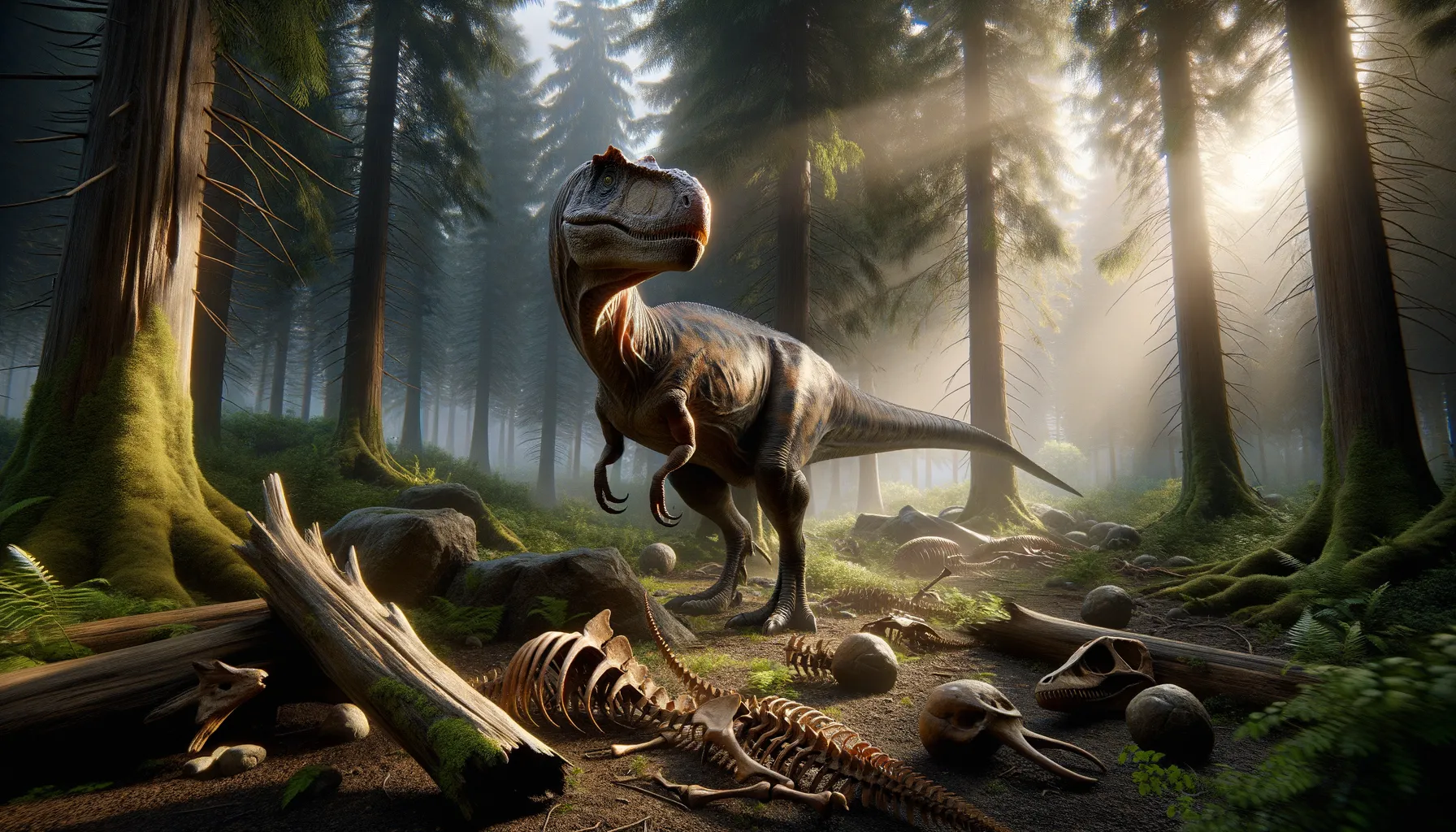
Zuolong
Swift predator of the Jurassic wilderness.
Period
Jurassic
Length
Roughly 3 meters long.
Height
About 1.5 meters tall.
Weight
Approximately 25 kilograms.
Zuolong was a small theropod dinosaur that roamed the Earth during the late Jurassic period. It was a swift predator, using its agility to catch small prey. With its fascinating role in the ecosystem, Zuolong provides researchers with valuable insights into the behaviors of the smaller meat-eaters of its time. Fossils show interesting adaptations that hint at a complex lifestyle.
Diet
Zuolong was carnivorous, primarily feeding on small animals. It likely hunted insects, small reptiles, and possibly young or injured dinosaurs. This diet positioned it as an important part of the food chain.
Hunting
Zuolong's hunting behavior was likely solitary, relying on stealth and speed. Its keen senses helped it track prey in various terrains of its habitat, making quick pursuits possible.
Environmental challenges
Zuolong faced environmental changes such as shifts in climate and vegetation, influencing its survival strategies. It had to adapt to fluctuating food availability, which could make finding sustenance challenging. These challenges required it to be versatile and adaptive.
Speed
Agile and likely swift for hunting.
Lifespan
Estimated to be around 10 to 20 years.
First discovery
Found in a remote part of China in 2001.
Fun Facts
- Zuolong is named after Zuo Zongtang, a famous Chinese general, reflecting its discovery in China.
- This dinosaur lived approximately 160 million years ago during the Late Jurassic period.
- Zuolong was a bipedal dinosaur, meaning it walked on two legs, similar to how birds walk today.
- It was a relatively small theropod, estimated to be about 3 meters long and weighing around 50 kilograms.
- Zuolong's long legs suggest it was a fast runner, possibly using its speed to catch prey or evade predators.
- Fossils of Zuolong were first discovered in the Shishugou Formation, a famous fossil site in northwestern China.
- Despite being a carnivore, Zuolong was quite small compared to the famous giant meat-eaters like Tyrannosaurus rex.
Growth and Development
As Zuolong grew, it developed features ideal for a predatory lifestyle, with changes in bone structure reflecting this. Growth rates were dependent on environmental conditions and food availability. Juveniles likely displayed different behaviors compared to adults as they matured.
Habitat
Zuolong lived in a variety of terrains including forested areas and floodplains. Its habitat offered diverse prey and opportunities for shelter. Seasonal changes in this habitat played a role in its life strategies.
Interaction with other species
Zuolong interacted with both prey and potential predators. It had to be cautious of larger theropods and other threats. Its niche in the ecosystem often determined these interactions and its overall survival strategies.
Natural lifespan
Zuolong's natural lifespan was around 10 to 20 years if it avoided predators.
Reproduction
Zuolong likely reproduced by laying eggs in carefully selected nests. Its reproductive strategies may have included guarding its young or choosing well-hidden nesting sites. Parental care could have varied between species.
Social behaviour
Zuolong was possibly solitary, focusing more on individual hunting. Some evidence might suggest occasional interactions during mating or around shared resources. Its social behavior influenced its survival and hunting tactics.
Fossil locations
Zuolong fossils have predominantly been found in China. Their discovery in remote locations provides valuable insights into its existence. These sites are key to understanding the regional biodiversity of its time.
